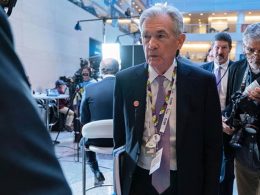by Andrew Pease, Russell Investments
Executive summary:
- Our base case scenario is for the U.S. economy to achieve a soft landing, but we still see a 35% probability of a recession over the next 12 months.
- Conditions are improving in most other developed economies, including in the eurozone, the UK, and Japan, as they catch up from relatively lackluster post-Covid gross domestic product (GDP) growth trajectories. In Canada, a recession is no longer the industry-consensus outlook, although we believe the risk of the Canadian economy slipping into a recession over the next 12 months remains above average. Australia, meanwhile, remains on the narrow path of avoiding a recession.
- We do not see extreme tactical opportunities across equity regions, sectors, or styles. Our equity strategies are generally neutral and emphasize stock selection as the main driver of risk and return in portfolios.
Markets at mid-year 2024 are priced for a no-recession soft-landing scenario in the U.S., but mixed data signals are delaying rate cuts from most central banks. We believe this creates some risk of a harder landing—likely in the form of a mild recession—in late 2024/early 2025.
Key market themes
The key question of the year has been whether the U.S. economy is headed toward a soft-landing, hard-landing, or no-landing scenario—and a clear answer has yet to emerge. As 2024 reaches the halfway point, we see plausible reasons why any of these scenarios could occur.
The reacceleration or no-landing case is supported by above-trend jobs growth, double-digit expectations for corporate earnings growth, and inflation that remains stuck above 2.5%. The soft landing—or below-trend growth—scenario is backed by a slowdown in forward-looking labor market indicators. These include weaker hiring rates, cooling wage growth, and rising default rates on credit cards and auto loans.
The case for a hard landing or recession relies on historical precedent. The U.S. Federal Reserve’s (Fed) rate-tightening campaign has been the most aggressive since former Fed Chairman Paul Volcker’s tenure in the early 1980s, with rates currently sitting at their highest level in 23 years. The U.S. economy has never previously avoided a recession after a sustained period of restrictive monetary policy.
A no-landing scenario seems the least likely outcome, with plenty of evidence that the U.S. economy is slowing and inflation pressures are easing. In our view, the main debate is between a soft landing or a recession. The argument for a soft landing is that this cycle is so different that the normal rules do not apply. However, we think this could also be a case of this time is longer rather than this time is different, with the typical economic impacts caused by rising rates manifesting at a slower pace than normal, but still eventually sparking a recession.
While both scenarios look possible to us, we believe markets are underappreciating the risk of a mild recession, creating an asymmetry in the return outlook. From our vantage point, there is some return upside if soft-landing expectations are correct, but also the risk of a potentially significant drawdown if a recession does occur. We think it’s more likely than not that the U.S. economy can dodge a recession in the year ahead, but macroeconomic uncertainty is high.
The outlook for the eurozone economies continues to brighten as industrial activity picks up, bank lending growth improves, and inflation tracks toward the European Central Bank’s (ECB) comfort zone. We see European stocks as attractively valued relative to U.S. stocks.
In the UK, the outlook is beginning to improve, albeit from a low base. However, core inflation remains sticky at 3.9%, preventing the Bank of England (BoE) from signaling near-term rate cuts. We think the FTSE 100 Index is relatively attractive with a 12-month-ahead price-to-earnings ratio of 11.4 times and a 3.5% dividend yield.
In China, policymakers have become more forceful in trying to turn the nation’s property market around, effectively creating a program that allows local governments to purchase excess inventory in different cities. The size of this pilot program is not large, but we see this shift in the stance of policymakers as an important turning point in China’s economy.
Japan’s economic outlook looks decent, with manufacturing picking up, the China outlook becoming more supportive, and the depreciation in the Japanese yen boosting inbound tourism. We expect the Bank of Japan, which raised interest rates for the first time in 17 years in March, to likely raise rates further, albeit in a patient manner.
Because Australia’s inflation pulse trails the rest of the world by about six months, we anticipate that the Reserve Bank of Australia (RBA) will likely lag major central banks in reducing rates. Our current base case is for a cut in November, but there is a growing risk that the RBA may stay on hold until early 2025.
The Canadian economy has avoided a recession as population growth has supported consumption and, in turn, GDP (gross domestic product) growth. However, the persistent increase in Canada’s unemployment rate and a greater-than-3% contraction in per-capita GDP since the second quarter of 2022 indicate the economy has been weaker than the headline GDP suggests.
Economic views
- U.S. recession probabilities
While a soft-landing scenario is our base case, we still see a 35% probability of a U.S. recession over the next 12 months - Artificial intelligence (AI) and economic growth
We’re more optimistic about the impacts of AI on GDP growth rates, given the early indications of efficiency gains in certain industries as well as the speed at which improvements are occurring. Additionally, we think the benefits of AI will likely lead to a reallocation of labor and new tasks, rather than the new technology simply being a cost-saving measure. . - Bank of Canada rate cuts
We think the Bank of Canada could deliver three additional rate cuts this year as long as the country’s disinflation trend continues. - European politics
We believe political turmoil resulting from European parliamentary elections will likely subside in the coming months, allowing European equities to rebound. - BoE easing
Interest rate markets have priced 100 basis points of BoE easing over the next 12 months, which seems realistic given that inflation should get closer to the BoE’s 2% target over the next year.
Asset class views
Equities: Neutral
We do not see extreme tactical opportunities across equity regions, sectors, or styles. Cheaper segments of the equity market include the value factor, small cap, financials, and emerging markets, but most of these exposures carry higher betas in a period of elevated uncertainty. As a result, our equity strategies are generally neutral and emphasize stock selection as the main driver of risk and return in portfolios.
Fixed income: Attractive valuations for government bonds
We see government bonds as attractively valued. We think many developed-market sovereigns offer good carry, with real yields at their highest levels in decades and the potential for double-digit returns in a recession scenario. Notably, credit spreads are historically tight for both investment grade and high yield corporates, leaving an unattractive risk-reward profile for multi-asset investors.
Currencies: Neutral
We are neutral on most major currencies, with the U.S. dollar looking expensive and the yen particularly cheap on a purchasing power parity basis over the medium-term.
Read the complete 2024 Global Market Outlook – Q3 update
Copyright © Russell Investments














